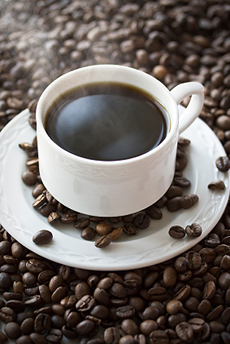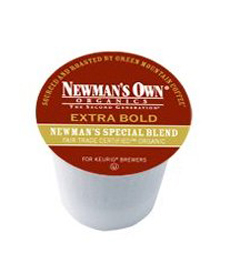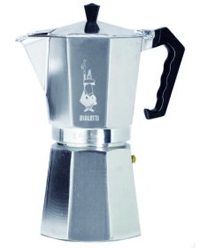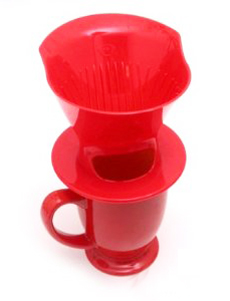Coffee Glossary: A Glossary Of The Different Coffee TypesPage 5: Terms Beginning With J To Q This is Page 5 of an 6-page article. Click on the red links below to visit other pages. This glossary is protected by copyright and cannot be reproduced in whole or part. You are welcome to link to it.
|
 Have a fresh cup! Photo by Ermek | IST. |
|
| JAVA: An island of Indonesia that is a big producer of coffee, and gave its name to a generic cup of coffee. |
||
| JOE or CUP OF JOE: Named after Admiral Josephus “Joe” Daniels, Chief of Naval Operations, who outlawed alcohol on board ships and ordered coffee as the beverage of service. The term, “Cup of Joe” followed, and because sailors wanted their cup “hot,” Hot Joe was shortened to “hojo.”
|
||
JUICY: A mouth-watering quality used to describe coffees that make one want to salivate. KAHLÚ A COFFEE:
|
 A White Russian cocktail. Photo courtesy Kahlua.com. Find more cocktail recipes. |
|
| K-CUP: A plastic cup of coffee, used with single-serve coffee machines. The term is named after Keurig, the coffee machine manufacturer that first introduced the k-cup. The concept is now produced by a variety of manufacturers.
|
||
| KENYA: Along with coffee from Tanzania, Kenya coffee is rated by the International Coffee Organization as Africa’s finest. With body, brightness and flavor in perfect balance, it offers everything plus just a hint of East African distinctiveness that sets it apart from Western Hemisphere coffees.
|
 A k-cup of Newman’s Own coffee, made for the Keurig system |
|
| KONA COFEE:One of the most highly-regarded coffees in the world, grown on the southwest coast of the Big Island of Hawaii. Aromatic and medium-bodied with a sweet flavor and mild acidity. |
||
|
LATTE MANUAL DRIP BREWING: MELLOW or MILD:
|
||
| METHYL CHLORIDE: The main chemical in the traditional or European decaffeination method, wherein the beans are soaked in water, the caffeine is extracted from the water, and the water is reunited with the decaffeinated beans to add back flavor. Methyl chloride is added to the extracted water to bond with the caffeine molecules, leaving more of the coffee flavor in the water. Less than trace amounts of the chemical remain in the beans which is the acceptable limit by the FDA. Most decafs are processed by this method; those that are processed with no chemicals are called Swiss Water Process or “Naturally Decaffeinated,” which uses a bonding chemical called ethyl acetate, which is extracted from decaying organic matter.
|
||
| MICROFOAM: Microfoam is created by the steam wand of a professional cappuccino machine, used to foam a pitcher of milt. The combination of the crema atop the cup of espresso and the velvety microfoam allows patterns to be made with the foam (barista art). Other types of mill steamers and foamers do not create the tiny bubbles required for microfoam. |
||
| MICROWAVE BREWER: A coffee brewers that makes coffee in a microwave oven.
|
Microfoam has tiny bubbles that enable the creation of artistic designs. Photo courtesy HiLine Coffee Co.
|
|
| MOKA or MOCHA:
A small irregular bean, olive green in color, with a unique acid character. Native to Yemen and shipped from the port of Moka, which gave it its name. |
||
| MOKA JAVA:
A popular blend of two well-known coffee varieties: combining the sharp, winey/fruity flavor of Moka beans from Ethiopia and the rich, deep-toned body of Java beans. Moka, or Mukha, is a seaport on the Red Sea in the Republic of Yemen through which much of the early coffee trade flowed.
|
||
| MOKA POT:The classic Italian stove top espresso-maker, claimed to be the most copied coffee-maker in the world. Water goes into the base, and ground coffee sits in a metal filter cup on top of the base. The pot is put on top of the stove, and boiling water goes through the coffee in the base and into the top, section, from which it is poured. The Moka Pot comes in sizes from 4 cups to 12 cups, and from the “original” design to sleek and stylized designs. All function in the same way. MOLDY:
|
 Get more information on this classic Bialetti Moka Pot, a stove top espresso maker. |
|
|
MOUTHFEEL: Refers to how a coffee feels in the mouth: thin, full, round, etc. The smell of mold or mildew. A negative flavor, often resulting from overheating or lack of proper drying. NATURALLY DECAFFEINATED: |
||
| NEUTRAL:
A flavor characteristic that is seen as desirable by some, yielding no predominant flavors; it is the goal of a “generic” blended coffee. NUTTY: |
 |
|
| ORGANIC COFFEE: Coffee which is grown under the standards of the USDA Organic Certification program, without pesticides and under environmentally sustainable circumstances. It will bear the green and white USDA Organic seal. Learn more about organic certification. |
||
| PAST CROP: A negative characteristic of green coffee that has been sitting in the warehouse too long and has gone over the hill, acquiring a woody taste. |
||
| PEABERRY: A coffee bean that is round rather than flat, coming from a coffee cherry that contains only one seed instead of the usual flat sided pair. This happens when one of the seeds fails to grow and the other assumes a round shape—about 5% of arabica beans. Under normal conditions, a coffee cherry has two seeds, which will be processed to become the coffee beans. But sometimes, the cherries will produce only one bean, a peaberry. The peaberry, which is slightly smaller than a normal coffee bean, has more concentrated flavor. POD:
|
||
| POUR OVER or MANUAL DRIP BREWING: |
||
| Long called the “drip method,” this fashionable new term uses the original low-tech method. Ground coffee is added to a ceramic or plastic cone that sits in a paper filter atop a cup or other receptacle (ceramic pots, glass carafes, etc. can be used, though usually with a larger cone than a single-serving cup). The technique was invented by Melitta Benz in 1908, to remove the grittiness and murkiness of coffee as it was then prepared. She devised a paper filter and set it into a brass cup into which she punched holes. |
||
|
PROCESSING: The act of removing the coffee cherry pulp from the seeds. Coffee cherries are either sun dried and milled, or fermented and pulped. Continue To Next Page, Terms R To Z
|
 You can do your own pour-overs with this cone and mug set from Melitta. It is also available with a travel mug instead of a cup. Photo © EspressoParts.com. |
|
Last Updated May 2018
© Copyright 2005-2025 Lifestyle Direct, Inc. All rights reserved. All images are copyrighted to their respective owners.
